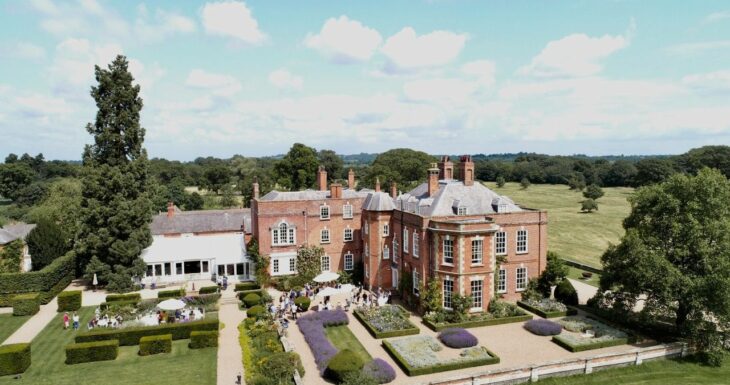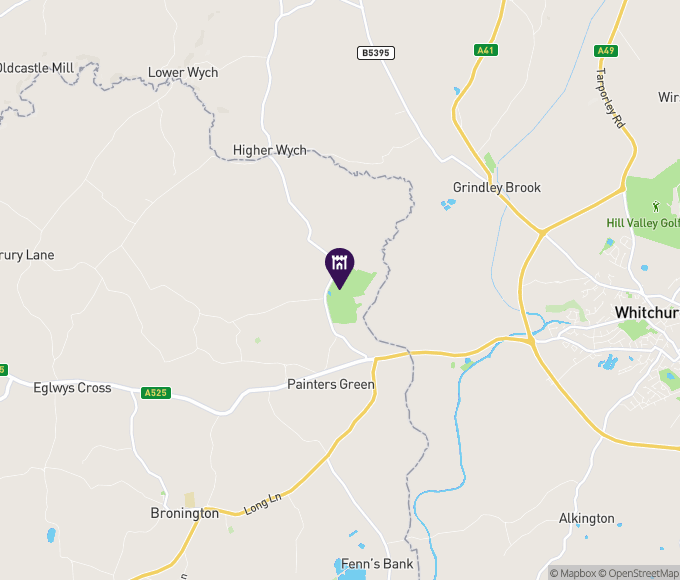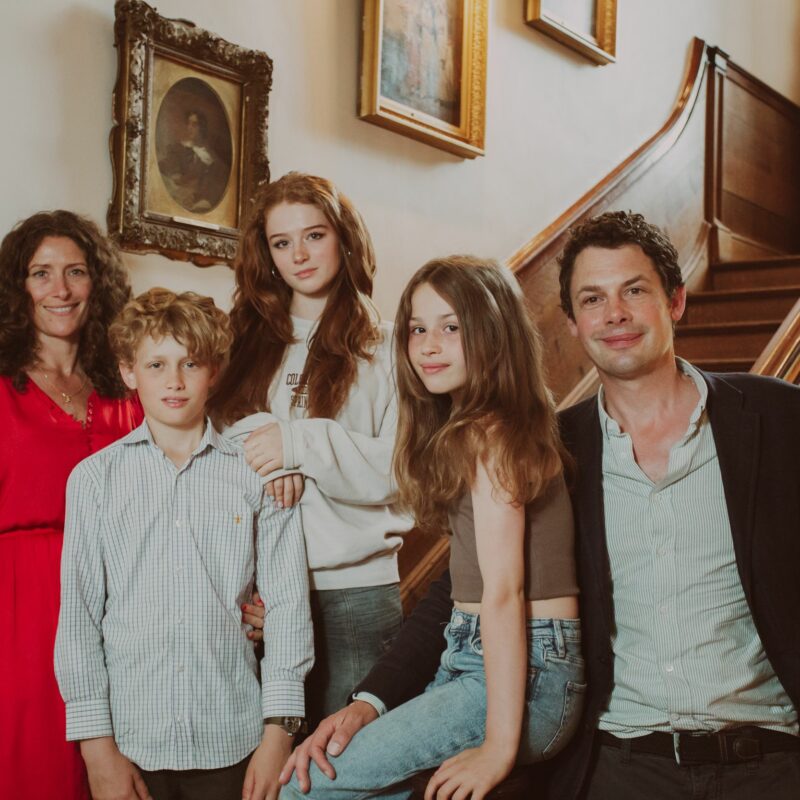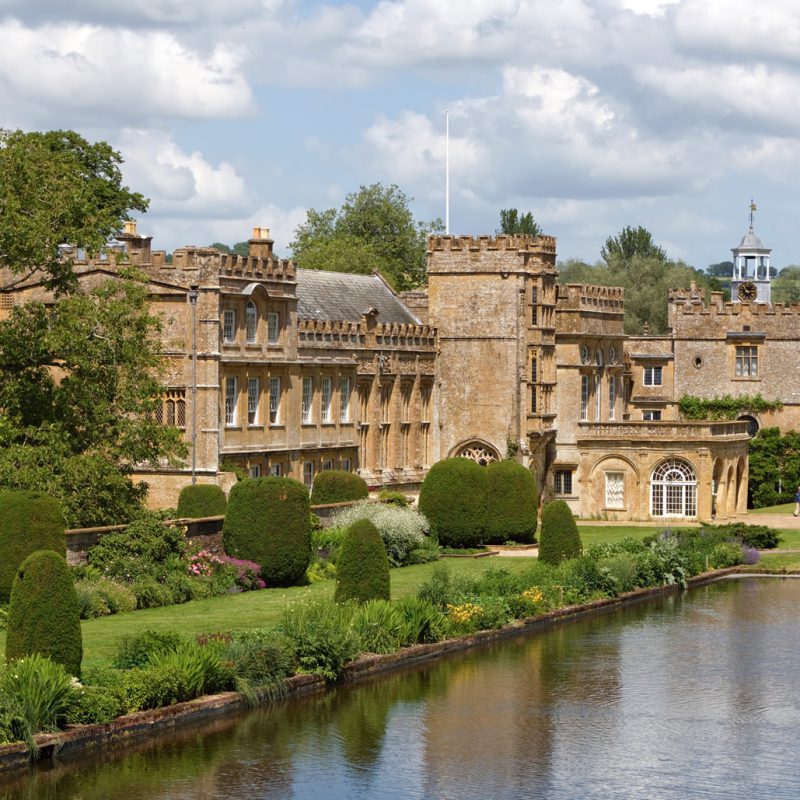Iscoyd Park
Romantic and recently restored family home set beside a quintessential cricket pitch.
near Whitchurch, Shropshire, SY13 3AT

- Accessible parking
- Wheelchair ramps/routes
- Accessible toilets
- Guide dogs welcome
Family home dating back to 1737. Bought by Philip Lake Godsal in 1843. Son, Philip William, was a leading agriculturist. His son, Philip Thomas, invented the Godsal rifle. The park used as a hospital and POW camp in World War II, and as a Polish hospital from 1945 – 1956. . Now run by Philip Langley Godsal and wife, Susie. Undergone much refurbishment.
Iscoyd Park has a rich and varied history with a string of colourful owners over the centuries. The house, as seen today, dates back to 1737. However, parts date back to 1630 and there was an ‘ancient mansion house’ on the site from medieval times. William Hanmer, who had married the Jennens heiress of Gopsal, Leicestershire, built the front part of the house in 1737. It was then sold to Rev Richard Congreve in 1780.
Philip Lake Godsal, who was the son of the leading coachmaker of the time (also named Philip Godsal), bought the house in 1843. The Godsal family has been at Iscoyd Park more or less ever since. P.L. Godsal added the portico and the dining room and Philip William Godsal, his son, was responsible for the bow to the drawing room in 1876 and the curious looking water tower at the back of the house to accommodate bathrooms and WCs. P.W. Godsal was an improving agriculturalist and rural philanthropist who believed that the labourers who worked for his farm tenants should have the opportunity to farm their own smallholdings. Philip Thomas was next. He was an outstanding shot and a founder member of the English Eight Club in 1878. His inventions included the Godsal Rifle, which was nearly adopted by the British Army instead of the Lee-Enfield.
In the Second World War, the park at Iscoyd was requisitioned for use as a 1,500-bed hospital for United States Forces with a prisoner-of-war camp in the enclosure. As Hugh Montgomery-Massingberd wrote, ‘The beautiful parkland was obliterated by an Orwellian nightmare of Nissen Huts, barbed wire and control towers.’ The Americans then handed it over and immediately after the war it become a camp and hospital for Polish refugees.
Colonel Philip Godsal returned to the house in 1946 but because of the continuing presence of the camp lived in a flat on the first floor in the library wing. It was not until 1957 that the park was finally given back to the family. In 1964, Philip H. Godsal moved to Iscoyd and restored the Georgian façade. He died in 1982 and two years later his son, Philip Caulfeild Godsal, moved in. A land agent, Philip Caulfeild gradually set about restoring all the outbuildings, re-roofing the main part of the house and ridding it of deathwatch beetle.
The latest in the Godsal dynasty to occupy Iscoyd, Philip Langley and his wife Susie, have taken on the job of renewing various parts of the fabric of the house and the bulk of this huge restoration project was completed in 2010.
Go on a guided tour of the main house, converted outbuildings and gardens, conducted by a member of the family.
Tours that are scheduled will be listed below. If none are scheduled yet, please check back later, or find other tours you might enjoy on our tours listing page here.
Groups are welcome to visit the house and gardens, refreshments can be provided.
Please contact us to arrange:
Contact Philip Godsal on 01939 210113 or email info@iscoydpark.com.
- Accessible parking
- Wheelchair ramps/routes
- Accessible toilets
- Guide dogs welcome
Excellent tour given by Philip Goddard. It was amazing the work put into this house outbuilding and gardens since 2009. I was so impressed by the attention to detail and our very informative guide. So lovely to be hosted by one of the family who was so enthusiastic
Just to say how much we enjoyed our tour of the house and gardens this morning. We learnt lots of interesting things. We do hope you get lots of other people visiting.
Getting here
near Whitchurch, Shropshire, SY13 3AT
Located on the North Wales side of the border with Shropshire and Cheshire, off the A525 between Whitchurch and Wrexham, and 2 miles from the A41/A49 Whitchurch bypass.
Our nearest railway station, Whitchurch, is located 3 miles away, with regular services to Crewe (connection to the mainline service to London and to the North/Scotland.) Services to Manchester, Cardiff and South Wales.

I have lived at Iscoyd since 2009, with Susie, our children Poppy, Hector, Cecily, and Freda and Mabel and the dogs. We have been restoring he house and gardens, which opened as a wedding venue in May 2010. We have a great passion for Iscoyd and for the experience it provides for all those that come here and we can’t wait to share it with you.

Become a Historic Houses member
Explore the nation’s heritage from just £68 per year.
Hundreds of the most beautiful historic houses, castles, and gardens across Britain offer our members free entry.
Also: receive a quarterly magazine, enjoy monthly online lectures, get exclusive invitations to buy tickets for behind-the-scenes tours, and take up a range of special offers on holidays, books, and other products you might like.

